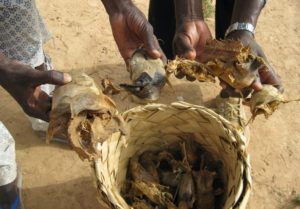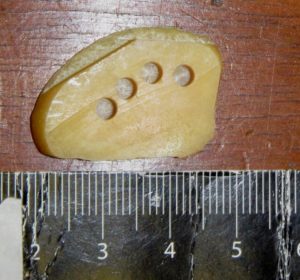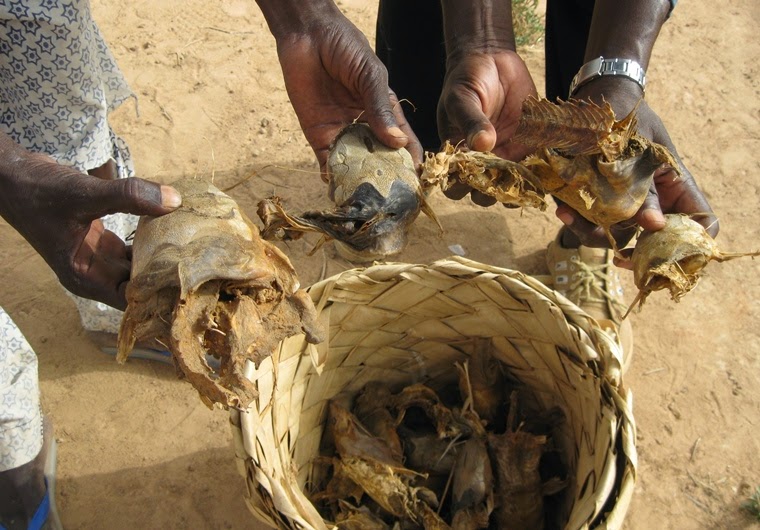
African manatees are very hard to observe in the wild due to their shy nature and the murky water habitats they live in, so I decided to research their diet using a technique known as stable isotope analysis. The name sounds intimidating, but the concept of stable isotopes is really quite simple: every plant and animal has a unique carbon and nitrogen signature, which differs for lots of reasons including the attributes of environment they live in (rainfall, water quality, soil quality, pollution, etc.) and many other factors. By collecting samples of everything we think an organism eats from each habitat they live in, these signatures can be used to determine what makes up an animal’s diet.
In my case, I collected plant, fish, and mollusk samples throughout manatee habitats in Senegal and Gabon, as well as bone samples from manatees from the same areas, to determine their average lifetime diets in the different habitats in which they lived. I was also able to sample manatee bones collected 70 years ago from a museum collection, so that I could compare manatee diet in the past to samples collected recently. Then I took all the samples to the laboratory, processed them to get their stable isotope values, input those values into an analysis program, and got some exciting results.

So why is this important? The results of this study give us accurate information about the food resources manatees utilize over time in the different habitats they live in. This can help resource managers prioritize specific places where food resources are abundant for conservation purposes. This new information also increases the list of species we need to monitor as important food sources for manatees. For example, now that we know manatees in Senegal depend upon mollusks and fish, we need to try to resolve conflicts with fishermen and help to conserve not just the plants, but all the species manatees depend upon. This is the first dietary analysis study for the African manatee and I look forward to publishing the results in the scientific literature soon, and continuing my studies of manatee diet in other countries.


